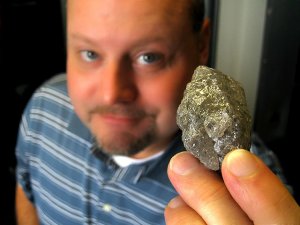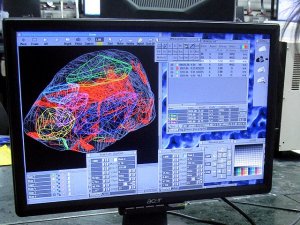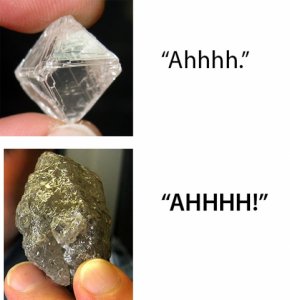- Joined
- Jan 7, 2009
- Messages
- 9,725
TC1987|1395318770|3637854 said:Diamonds are three dimensional. If you orient the diamond one way relative to the camera lens, or to your eyes, an inclusion may be invisible or nearly so. But if you change the tilt, or the position of the diamond relative to camera or eye, then the inclusions "may" be clearly visible. That is partly what gets a diamond into SI2 vs. SI1.
Loss of brilliance occurs due to inclusions scattering light, just what Karl said above. Diamonds are in motion when worn as a ring. You have to evaluate inclusions "in motion," especially for larger diamonds and lower clarity grades. Some stones may make a great pendant or earrings but not ring, if the wearer wants an eyeclean stone.
On that particular stone, the size of it alone is going to make finding an eye-clean SI2 very rare. But on the other hand, those wisps are out there in the star/bezel/upper girdle facets. If the table area is clean, loss of brilliance in that outer area may not bother you. But since those inclusions intrude into the table, then probably you'll see them rather easily.
That's just my opinion. I don't need an eyeclean stone, btw. Some people don't.
What a great post!!!
"Light Return"- how do we measure it?
TC's points will apply here as well.
Let's say I agree with Garry- an SI2 graded by GIA based on twining wisps will show a loss of light return.
How much?
Here's an analogy that will likely cover a large percentage of GIA graded SI2 twining wisp stones.
Say a bathtub was filled with 100 gallons of water, and you took an eye dropper to remove a few ounces.
Like that much.
There IS less water, but you'd never know it.
Any measurement purported to be "objective" needs fixed parameters- such as controlling the light, and it's relation to the diamond.
But in the real world, once a diamond is set and worn ALL of that goes out the window.
So an RBC with the best light return won't sparkle as much as an OMB in candlelight.
I'm in agreement with Dan and Wink- many SI2 twining wisp stones show no perceptible loss of brilliance due to the imperfection.
Of course there are some that do as well.....but by no means a majority.






300x240.png)